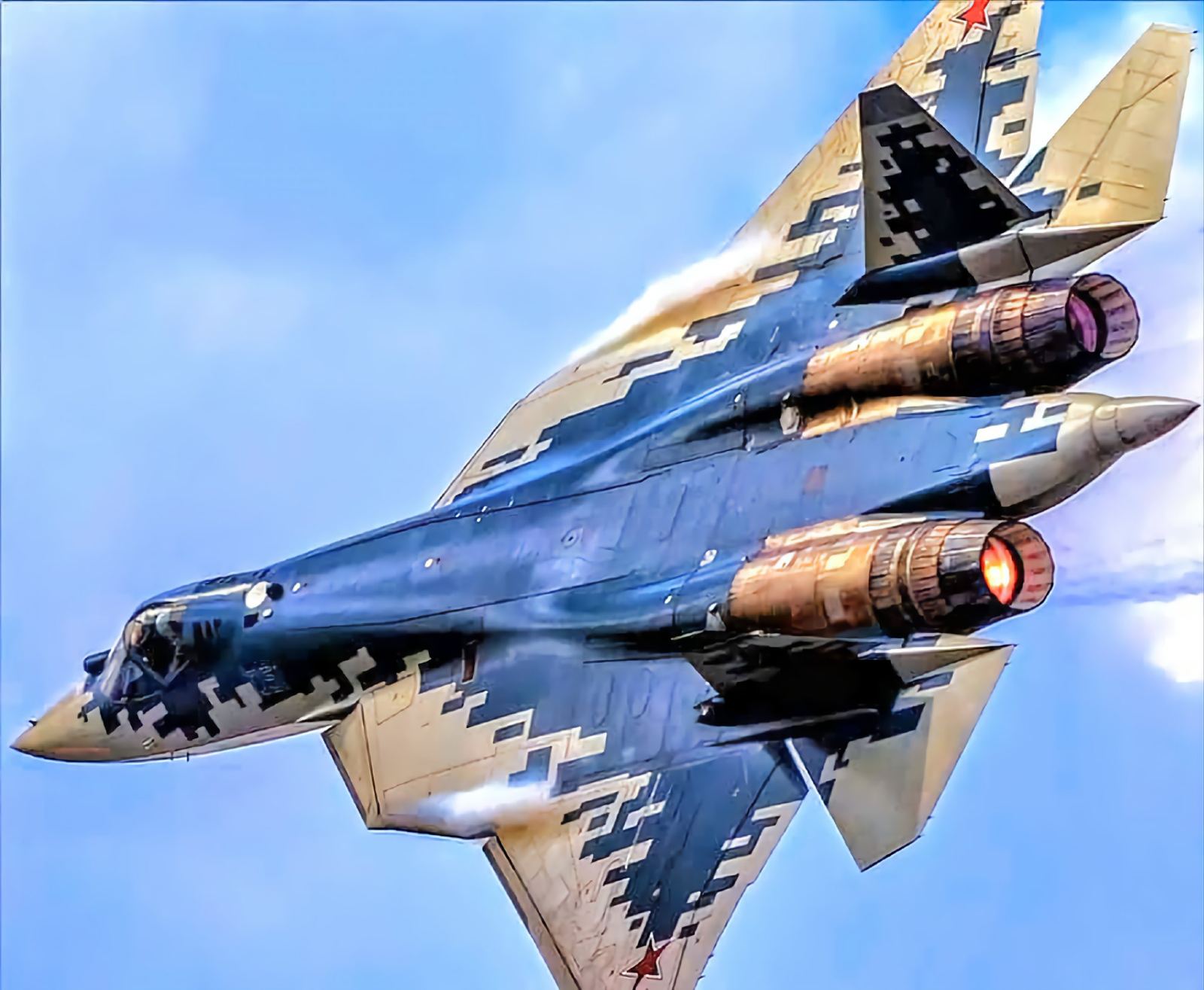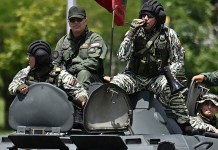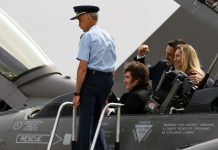Following the India-Pakistan conflict in May this year, China was upbeat about the export potential of its J-10CE fighter jets, which were marketed as ‘Rafale Killers’.
Beijing was hopeful of finally getting a slice of the lucrative fighter jet export market, estimated at around USD 50 billion annually.
Despite Chinese jets costing less than half of their Western counterparts, such as the F-16, Eurofighter Typhoon, and Rafale, and Beijing’s willingness to export fighter jets without imposing the restrictive measures often associated with US jets, only a handful of countries ordered Chinese aircraft.
One of the biggest handicaps to the sale of Chinese jets was that their fighters had not been tested in real combat.
That changed in May this year, when Chinese fighter jets with the Pakistan Air Force (PAF), such as the JF-17 Thunder and J-10CE Vigorous Dragon, faced off against the Indian Air Force (IAF), which employed the latest Russian (Su-30MKI and MiG-29) and French jets (Mirage-2000 and Rafale).
The outcome of that air battle is still debated, with both India and Pakistan making contradictory claims. India claimed it destroyed nearly 12-13 Pakistani jets (including F-16, JF-17, and AEW&C aircraft), while Pakistan claimed that it shot down six Indian fighter jets, including three Rafales.
However, despite the contradictory claims and lack of any independently verifiable evidence, China went ahead and started marketing the J-10CE as ‘Rafale Killer,’ hoping to cash in on the rumours spread by the Pakistan Army.
Furthermore, according to a French intelligence report, the Chinese propaganda against Rafales was not limited to just a few media reports. The Chinese embassies in many countries actively pushed a negative narrative on Rafales following the India-Pakistan clash in May.
Findings from a French intelligence service, as reported by the Associated Press, indicate that defense attaches in China’s foreign embassies led a charge to undermine Rafale sales.
They sought to persuade countries that have already ordered the French-made fighter — notably Indonesia — not to purchase more and to encourage other potential buyers to opt for Chinese-made planes.
According to French officials, the Chinese campaign included viral social media posts, manipulated imagery purporting to show Rafale debris, AI-generated content, and video-game depictions to simulate combat.
Furthermore, more than 1,000 social media accounts were created to push the narrative of Chinese technological superiority.
The Chinese embassy’s defense attaches echoed the same narrative in meetings with security and defense officials from other countries.
However, it seems that all these Chinese efforts amounted to nothing, as not only are countries doubling down on Rafale orders, but many Asian and African countries—the supposed market for Chinese jets—are choosing new Russian jets over the Chinese J-10CE fighter jets.
Three More Countries Order Russian Jets
Russian government documents released recently by the Hacker group ‘Black Mirror’ suggest that Moscow has received orders for its Su-34, Su-35, and Su-57 fighter jets from three countries.
Documents hacked from the Russian state corporation Rostec claim that Algeria has purchased 12 Su-57 fifth-generation fighters and 14 Su-34 (likely the Su-34ME variant) fighter-bombers. It also claims that Iran has ordered 48 Su-35 fighter jets, while Ethiopia has ordered 6 Su-35.
Hackers obtained correspondence from Radioelectronic Technologies showing Russia likely plans to deliver equipment for 12 Su-57 and 14 Su-34 jets to Algeria, 48 Su-35 to Iran, and 6 Su-35 to Ethiopia. pic.twitter.com/YgaPFLZUE5
— WarTranslated (@wartranslated) October 4, 2025
If the claims are valid, Algeria would become the first foreign buyer of the Russian Su-34 Fullback fighter-bomber as well as of the Su-57 fifth-generation stealth aircraft.
All three countries — Algeria, Ethiopia, and Iran — are also potential markets for Chinese fighter jets.
According to leaked documents, together these countries have placed an order for 90 Russian aircraft.
Notably, these countries are ordering Russian fighter jets, despite the threat of US sanctions and questions over Moscow’s ability to deliver fighter jets amid the ongoing war in Ukraine.

The unprecedented Western sanctions imposed on Russia have impacted its ability to produce fighter aircraft. Furthermore, amid the protracted war in Ukraine, Moscow is struggling to meet the demands of its own armed forces.
In such a scenario, there are legitimate questions about Russia’s ability to deliver these 90 fighter jets within the stipulated timeframe.
On the other hand, China’s J-10CE is price-competitive and combat-tested. Furthermore, ordering jets from China does not carry the risks of US sanctions.
Also, China is known for its surge capacity and robust supply chains. Beijing can deliver the fighter jets within its promised timeframe.
Acquiring fighter jets within the set time frame is particularly critical for Iran, as Tehran may face another Israeli attack at any time in the near future and urgently needs to modernize its vintage air force, which mainly consists of second-generation fighters such as the F-4E and F-5E/F.
Iran needs to modernize its air force to counter the Israeli Air Force, which boasts state-of-the-art fourth- and fifth-generation fighter jets, including F-15s, F-16s, and stealth F-35s.
Meanwhile, Chinese security analysts are already raising doubts over Russia’s capability to deliver Su-35 fighter jets to Iran within the promised time frame.
According to leaked documents, Russia is required to deliver 48 Su-35 jets to Iran under a contractual term of 2026-2028, along with 24 L-265M10-02 Khibiny-M electronic jamming systems and other equipment.
A recent article on the Chinese micro-blogging site Sohu said, “Before the Russo-Ukrainian War, annual production of the Su-35 fighter jet was only around 12. Under the pressure of war, Russia increased Su-35 production, but the annual output is still around 24.”
“Given its own continued demand, Russia has no capacity to increase exports. Currently, it’s not just Iran that is seeking to acquire the Su-35 fighter jet; other countries are also interested. Therefore, Iran should not expect to purchase more Su-35s and will have to seek alternative models, with the J-10 being the primary option.”
Furthermore, the article suggests that all is not lost for the J-10CE in Iran, as Tehran needs at least 100 modern fighter jets to upgrade its air force, and Moscow is not in a position to deliver that many.
“Iran still needs to import a large number of fighters, potentially over 100. Russia clearly cannot meet this requirement, and delivery of 48 Su-35s would take three years, practically the limit of Russia’s supply capacity,” it added.
However, more worringly for China, the J-10CE is losing not only to Russian fighter jets, but also to the French Rafale, an aircraft that the J-10CE allegedly shot down during the India-Pakistan clash.
Indonesia, Bangladesh Bet On J-10C?
Despite Pakistan’s unverified claims that it shot down three Indian Rafale fighter jets, and China-sponsored accounts magnifying the anti-Rafale propaganda, both India and Indonesia are doubling down on Rafale fighter jets.
Following the India-Pakistan clash in May, China launched a concerted anti-Rafale campaign in Indonesia, trying to convince Jakarta to cancel its Rafale order and buy Chinese J-10CE fighter jets.

In July, the pro-China, Hong Kong-based SCMP said in a report that Indonesia’s bet on Rafale jets is facing scrutiny after Pakistan claimed to have shot down three of the same aircraft used by India, raising questions in Jakarta about the cost, capability, and strategic logic behind the US$8.1 billion deal.
Notably, Indonesia immediately refuted these claims in the Chinese media. Dave Laksono, a member of Commission I at the House of Representatives, which oversees defense, defended the government’s decision to buy Rafales, saying that any “unverified claims in conflict zones cannot be used as the sole basis for assessing the effectiveness or failure of a particular weapons system.”
“In modern military history, even the most advanced jets such as the F-16, F/A-18, and F-22 have experienced incidents of being shot down or crashed due to certain tactical conditions,” Laksono said. Therefore, the performance of the Rafale cannot be measured by just one incident.
Notwithstanding the Chinese propaganda, in June, Indonesia signed a letter of intent for 12 additional Rafale jets. Jakarta has already purchased 42 Rafale fighter jets in 2022 for USD8.1 billion.
Similarly, the Indian Air Force (IAF) can order 114 more Rafale fighter jets under its Multi-Role Fighter Aircraft (MRFA) tender. The Rafale is the frontrunner in the MRFA tender process.
India is also sticking with its earlier order for 26 Rafale M fighter jets, signed in April this year, for USD 7.4 billion.
In fact, even Taiwan is reportedly considering acquiring Rafale fighter jets to replace its aging Mirage 2000 fleet.
While India and Taiwan were unlikely to buy Chinese jets, Indonesia’s decision to stick with Rafale, despite China offering attractive terms for the J-10CE deal, must have hurt Beijing.
However, in a change of fortunes, Indonesia is also reported to be buying the J-10CE fighter jets from China.
The Indonesian defense minister said on October 15 that the country is set to acquire J-10 fighter jets from China, according to Indonesian news agency Antara.
“They will be flying over Jakarta soon,” Indonesia’s Minister of Defense Sjafrie Sjamsoeddin told reporters in Jakarta.
However, he declined to provide details on the purchase timeline or the aircraft’s expected delivery, according to the Antara report.
Meanwhile, the J-10C has also emerged as the frontrunner in Bangladesh’s US$2.2 billion fighter jet deal.
The Bangladesh government is reportedly planning to acquire 20 Chinese J-10CE “Vigorous Dragon” multi-role fighter jets.
The deal, estimated to be USD 2.20 billion, includes procurement, training, maintenance, and associated expenses. The Bangladesh government is likely to enter a government-to-government agreement. The deal could be inked in 2026 or 2027.
Documents quoted by the Bangladesh media indicate that the payments are likely to be spread over 10 fiscal years, until the Financial Year 2035-36.
The procurement will be conducted as part of Bangladesh’s plans to modernize its armed forces under the Forces Goals 2030.
China’s aerospace industry is making progress. After the US, China is the only country to have operationalized two fifth-generation fighter jets—the J-20 and J-35A—and an aircraft carrier version of the stealth aircraft, the J-35.
China is also testing two sixth-generation fighter jets, tentatively named the J-36 and the J-50.
Chinese jets are much cheaper than their Western counterparts and are now also combat-tested.
After consistent efforts, it seems the Chinese J-10C might finally have two new customers. However, it remains to be seen if these potential new orders from Indonesia and Bangladesh will be able to establish J-10C as a credible alternative to Rafale and F-16s in the global fighter aircraft market.
- Sumit Ahlawat has over a decade of experience in news media. He has worked with Press Trust of India, Times Now, Zee News, Economic Times, and Microsoft News. He holds a Master’s Degree in International Media and Modern History from the University of Sheffield, UK.
- VIEWS PERSONAL OF THE AUTHOR.
- He can be reached at ahlawat.sumit85 (at) gmail.com




